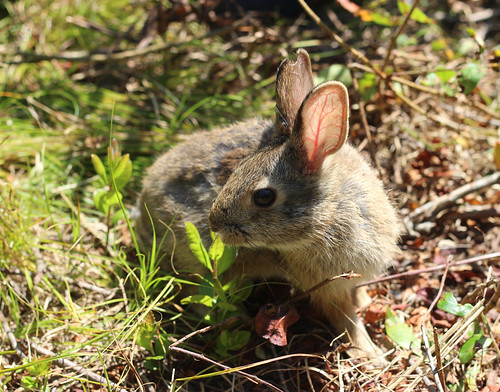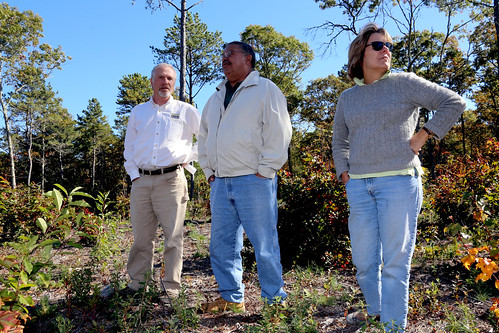
Cape Cod’s beautiful seashore, inlets, salt marshes and woodlands are a natural draw for year-round and vacation home owners, and tourists. A boon for the local economy, the associated development is not so good for an elusive little creature: the New England cottontail rabbit. Habitat loss has New England’s only native rabbit as a candidate for listing under the Endangered Species Act.
Private landowners, conservation groups, a tribe and government agencies have joined forces to restore New England Cottontail habitat throughout New England. In Mashpee, Mass., on Cape Cod, habitat restoration work at three sites is yielding results.
A total of nearly 100 acres of habitat are being restored on land owned, respectively, by The Trustees of Reservations land trust, Orenda Wildlife Land Trust and Mashpee Wampanoag Tribe. Because the three sites border each other, the conservation benefits are even greater as they provide a larger footprint for habitat.
USDA’s Natural Resources Conservation Service, (NRCS), and the U.S. Fish and Wildlife Service, (USFWS), provided financial and technical help through the departments’ Working Lands for Wildlife partnership. The Massachusetts Division of Fisheries and Wildlife also provided technical assistance.
New England cottontails need brush, shrubs and densely growing young trees – known as young forest or early successional habitat – where they can find food, rear young and escape predators. Much young forest has been lost to development or has grown up into older woods, where cottontails don't live.
More than 100 kinds of wildlife in the Northeast use shrubland and young forest during part or all of their life cycles, so restoring New England cottontail habitat benefits many other species, as well.
The New England cottontail – which looks similar to the more abundant Eastern cottontail, an introduced species – lives in coastal southwestern Maine, southeastern New Hampshire, Massachusetts, Connecticut, Rhode Island, and southeastern New York – less than a fifth of its historic range.
At the Mashpee River Reservation, owned by The Trustees of Reservations land trust, 50 acres of dense forest canopy have been cleared. Black huckleberries, low-bush blueberries, bracken fern and scrub oak were being suppressed by the dense canopy but with the tree clearing, the plants have really taken off, which will provide flowers for pollinators and fruit for wildlife.
“There’s a whole suite of bird species including grouse, turkey, eastern towhees, prairie warblers; we hope to see these things increase,” said Russ Hopping, the land trust’s ecology program director, noting that invertebrates, including rare moth species, also rely on this type of habitat.
In late May 2013, the Orenda Wildlife Land Trust began prescribed burning, a conservation practice that helps plants to regenerate by exposing soil and controlling competing vegetation. Administrator Elizabeth Lewis said that they saw results by that October. “We’ve been really pleased with the results of this program,” said Lewis.
NRCS and the Cape Cod Conservation District helped the Mashpee Wampanoag Tribe with a 32-acre New England cottontail habitat project on tribal land. The project holds historic, as well as environmental, significance for the tribe.
“Maintaining the environment is a part of my history, my culture, my life. To us all creatures are our brothers and sisters,” said George “Chuckie” Green, assistant natural resources director for the tribe.
“We started seeing plants that we hadn’t seen in our lifetime come back,” said Green who also noticed a small blue moth that he had never seen before. “This spring those little blue moths were all over the property.”
“What we did, and what our partners are doing, achieves something people said can’t be done,” said Green. “But we’re doing it. We are doing it.”

